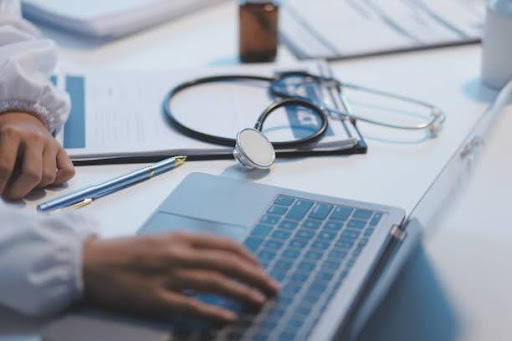Infection management is critical in the healthcare industry. Limiting the transmission of infections is crucial for the safety of both patients and medical staff in clinics and medical facilities. Medical uniforms are one frequently disregarded component of preventing diseases. Underscrubs, surgical caps, doctor lab coats, as well as medical scrubs at Women’s Scrubs UK, all act as a barrier against dangerous bacteria, lowering the possibility of contamination. The following article will examine how medical uniforms aid in infection prevention & go over the best ways to keep them hygienic.
The Significance of Uniforms in Infection Control
Healthcare workers, as well as the diseases they might come into contact with during their shifts, are separated by uniforms. The spread of infectious pathogens throughout patients or between providers is possible to avoid with the use of well-made, laundered clothing. Healthcare institutions can take a significant step in preventing infections and establishing safer conditions for all parties concerned by making sure that uniforms are continuously clean and uncontaminated.
Medical Uniforms as an Infection Prevention Measure
Medical clothing is the initial line of defence against viruses and germs. Use of protective clothing, which minimises exposure, is essential to health care personnel as they handle a multiplicity of infectious agents during their shifts.
Scrubs with Antimicrobial Properties for Extra Defence
Numerous contemporary medical scrubs are made with antimicrobial technology, which prevents fungal and bacterial infections from growing on the cloth. By preventing microorganisms from spreading via clothing, these scrubs for men and women offer a further barrier of protection. Particularly useful are antimicrobial uniforms in high-risk settings, including operating rooms, critical care units, as well as emergency rooms. Contrary to conventional uniforms, studies have demonstrated that antimicrobial materials dramatically lower microbiological contamination. These cutting-edge textiles also keep their professional & fresh looks during extended shifts by resisting stains and odours.
The Value of Appropriate Laundering
Appropriate washing procedures are equally as vital in controlling infections as wearing high-quality medical scrubs. When uniforms aren’t cleaned properly, they may harbour bacteria and spread dangerous infections throughout medical facilities.
The Best Ways to Clean Medical Uniforms
- Wash Daily: uniforms should be washed daily to eliminate contamination.
- Hot Water & Disinfectants: When scrubs are cleaned in hot water (over 60 o C) and with medical grade detergents, viruses and bacteria are inactivated.
- Individual Laundry: The medical uniforms should not be washed together with other regular clothes to prevent cross-contamination.
- Use industrial or hospital-quality washing machines: These are designed to comply with sanitary policies and effectively remove microbes.
- Note Facility Directions: Healthcare facilities often have directions on some of the laundry processes in order to ensure maximum hygiene.
Medical uniforms last longer when properly laundered, retaining their comfort as well as safeguarding qualities for an extended period of time.
Professional and Psychological Benefits
The psychological wellness and professional appearance of healthcare workers are significantly impacted by suitable work dress in a couple of ways.
Boosting Self-esteem and Confidence
Healthcare professionals’ self-assurance and self-worth can be increased by dressing correctly, neatly, as well as effectively. Greater efficiency and attentiveness are associated with a positive self-image.
Gaining Patients’ Trust
Professionalism as well as expertise are symbolised by uniforms. Patients feel more confident about the quality of their care when they see someone who is tidy and well-groomed.
Promoting Unity Within the Squad
Cooperation as well as a feeling of community may both be enhanced by uniform wear. The uniformity of each team member’s attire reinforces their commitment to a shared objective.
Conclusion
Never undervalue the significance of dressing appropriately for employment in the healthcare sector. In addition to being an essential defence against illnesses and physical dangers, it encourages comfort plus a polished look. For medical workers to stay sound and secure, uniforms are essential. Role-specific colour codes, ergonomic designs, & antimicrobial supplies are a few components that increase operational security and effectiveness. A well-thought-out uniform design improves individual employees as well as the general effectiveness of healthcare organisations. Businesses may better support their employees and establish a more secure, more efficient workplace by realising how important proper clothing is.
